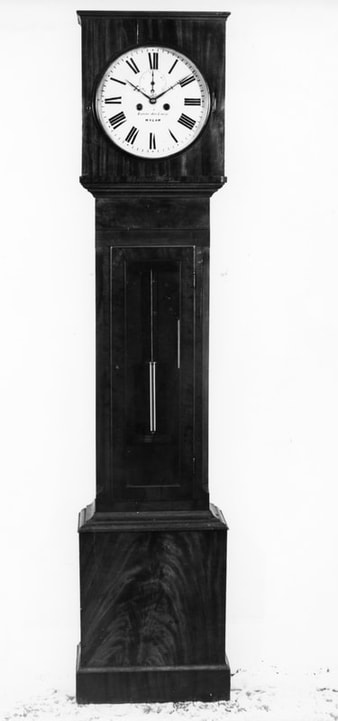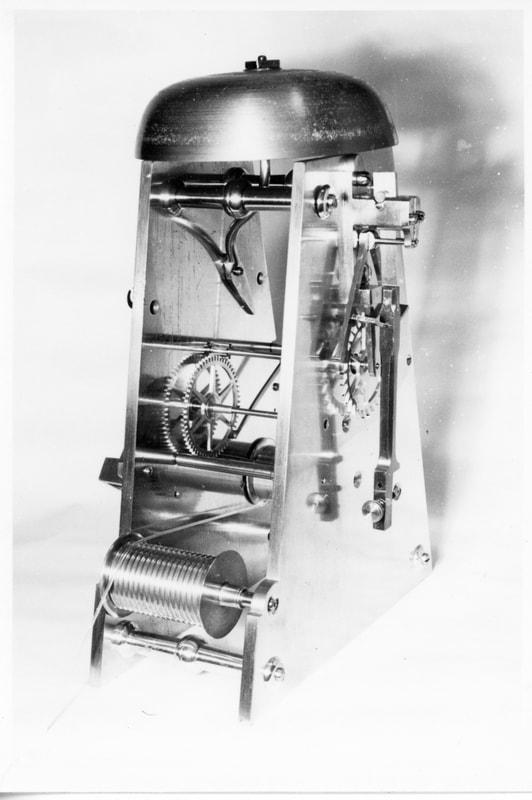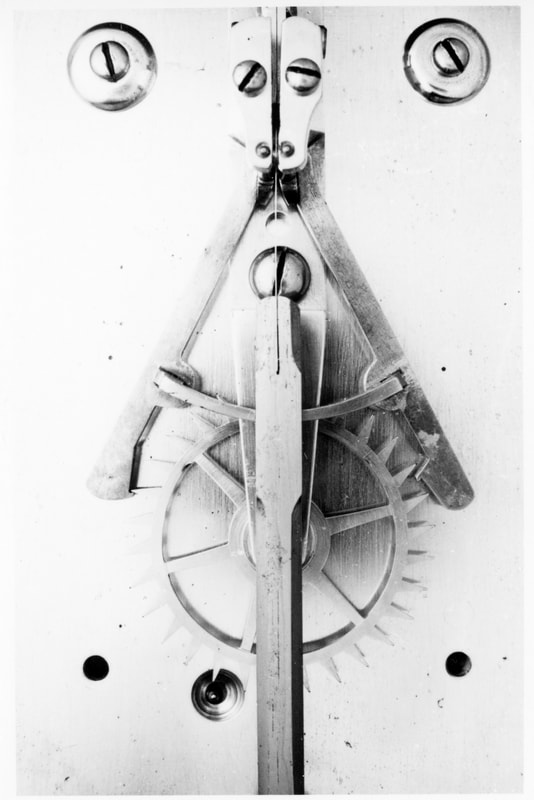|
In 1976 when I was researching “Clockmakers of Northumberland and Durham” I received a letter from Jim Arnfield of the Antiquarian Horological Society (A.H.S.) He had read my request for information about N.E. clockmakers.
Edmond Beckett Denison writing in 1874 describes the Mudge gravity escapement but suggests that it is likely to trip resulting in more than one tooth escaping. The Jackson escapement, however, has a cross-bar attached to both pallets, thus preventing his escape-wheel tripping. Mr Arnfield does not say how the movement performs in practice but he does suggest that the case has been altered to accommodate the dial and movement.
Isaac Jackson, junior (1795-1862) was the son of Isaac Jackson who married Mary Mason at Simonburn on 13th June 1795, baptised on 17th Sept 1797. By 19th June 1799 Isaac junior was a pupil at the private school of Mr.& Mrs. Allgood at Simonburn and was inoculated there on 4th Dec. 1799. Isaac obviously learned to read and write and was showing his mechanical skills at an early age and when he left school he worked down the local mine at Wylam. He is thought to have made clocks before 1812 when he was co-op into the local Militia. He was based in Alnwick during the two years in the Militia and probably spent a part of his spare time reading about clocks. He took an interest in musical instruments as well as drawing up plans for a model steam engine with “Eccentrics” for reversing the engine, while in Alnwick. The Militia was disbanded on 1st July 1814 and Isaac was allowed to return to Wylam, where he was able to demonstrate his model steam engine shortly after but his system was not adopted in a full size steam engine until it was demonstrated in “Wylam Dilly” in 1826. A written account of the model’s demonstration is given by the son of a person who witnessed the event and who later became a driver of the engine “Wylam Dilly”; he was John Harle and his son was Joseph Harle. Isaac had also returned to his clock making in 1814 so it is possible he could have made Jim Arnfield’s clock in 1816. Jackson produced at least 3 skeleton clocks and dozens of longcase clocks, many of which could be found in miner’s homes around Wylam. One of his last commissions was for his old friend Robert Stephenson who visited him in 1857 and the clock was completed on 14th Dec 1858 at a cost of £33. Stephenson was so pleased with the clock he gave him an extra £6. This clock with a gravity escapement was later displayed in the Darlington Railway Museum but has since been lost. Isaac Jackson was buried in St Mary’s, Ovingham, churchyard on 23 Nov 1862 aged 67 years. Robert Stephenson had died in 1859.
0 Comments
Leave a Reply. |
AuthorKeith Bates is an amateur horologist who has been researching clocks, watches and chronometers and their makers for over 30 years. Archives
August 2023
Categories
All
|




 RSS Feed
RSS Feed